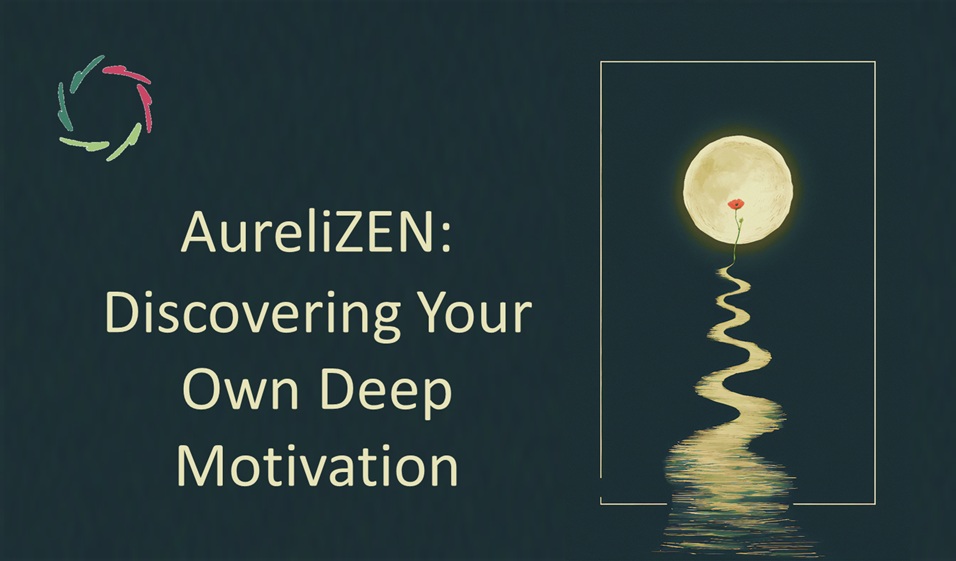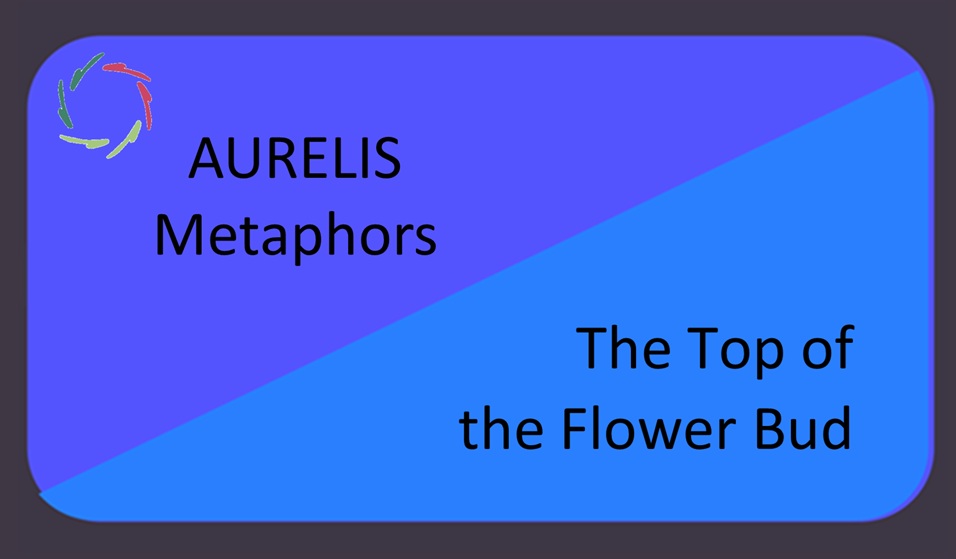AureliZEN: 4 – The Art of Deep Communication

[For an introduction to the AureliZen series, goto AureliZEN: a Seminar Series for Deep Growth.]
Communication beyond words
Most people think of communication as the exchange of words. We speak, we listen, we respond. True communication is far more than this. It happens also through presence, attention, and openness.
We have all experienced conversations where many words were spoken, yet little was truly understood. On the other hand, we have also had moments where a simple glance, a gesture, or a moment of silence conveyed more than any words could. Real communication is about understanding and being understood, and it is at the heart of all meaningful human interactions.
In this seminar, we go beyond surface-level conversation. We explore how to connect deeply with others, how to communicate beyond words, and how to use communication as a tool for motivation, leadership, and personal growth.
This approach aligns closely with the principles of deep autosuggestion, where real transformation happens at a level beyond conscious processing.
Parallel communication: A new way to connect
Traditional communication follows a linear model: One person speaks, the other listens, then responds. In reality, communication is never purely one-way. Even when one person is speaking, both are engaged in a continuous exchange of meaning, energy, and understanding.
Parallel communication is a different way of seeing this process. It is not about taking turns but about moving together in an interactive flow, like a dance:
- The speaker and listener are deeply connected in real-time.
- Attention is just focused on the entire experience of the interaction.
- The conversation grows from the shared presence of both people.
This is why some of the most profound moments of communication happen in silence — when both people are deeply tuned into each other.
YogaZen practice: hand-in-hand movement
[see: YogaZen How-to]
To physically experience this kind of connection, we practice a simple YogaZen exercise:
- Two participants sit or stand facing each other, placing their hands together with the lightest possible touch.
- One person begins a gentle, slow movement, and the other follows.
- After a moment, both close their eyes, and the movement continues naturally, without force.
This exercise shows how communication is not just about control but about flow, awareness, and presence.
The deeper level of communication
Most of what we communicate is not spoken:
- Subtle shifts in posture.
- Micro-expressions on the face.
- The rhythm of breathing.
- The energy we bring to an interaction.
These elements convey more than words ever could, yet we often fail to notice them. Real communication happens at this subconceptual level, below conscious awareness.
This is why deep communication requires open attention — the ability to perceive not just what is being said but everything that is being expressed beneath the surface. It is the foundation of AURELIS coaching, where the focus is on guiding a person not by imposing answers but by deeply understanding their inner world.
YogaZen practice: Eye contact and presence
This exercise helps cultivate deep attention and presence:
- Two participants sit facing each other, making soft, natural eye contact.
- The goal is not to stare but to simply witness the other person without judgment.
- Participants observe how their own inner reactions shift during the process.
This practice reveals something powerful: true communication is not about saying the right thing. It is about being fully present with the other person.
The difficulty of true listening
One of the greatest challenges in communication is truly listening.
- Much of the time, we listen only to prepare our response.
- We quickly categorize, interpret, or judge what the other person is saying.
- Instead of staying open, we unconsciously filter what we hear through our own perspective.
Deep communication requires something different: listening without immediately forming an opinion. It means being comfortable with silence, with pauses, with allowing space for the other person’s thoughts to unfold.
YogaZen practice: Silent communication through posture
- Participants sit in a relaxed position, eyes closed, and try to ‘say something’ only through their posture — without words, without movement.
- The goal is to experience how much we communicate, even when we are silent.
This exercise helps us realize how our presence itself is a form of communication.
The power of showing yourself
Real communication requires openness. If we hide behind masks or defensiveness, we block true connection.
- The paradox of openness: The more we allow ourselves to be seen, the more trust and understanding we create.
- This does not mean oversharing. It means being genuinely present in a way that invites the other person to do the same.
Reflection: How often do you communicate not just with words but with your full presence?
Open attention: The foundation of deep communication
The most important communication skill is also the most difficult:
- Open attention means truly listening without immediately reacting.
- It requires slowing down our mental processes and staying with the experience rather than rushing to interpret or respond.
- It is a form of meditative awareness — allowing space for real connection.
This is why open attention is one of the most powerful and transformative skills in both personal and professional life.
YogaZen practice: Balancing attention through physical balance
- Participants stand on one leg, finding a stable balance point.
- This physical balance mirrors the mental balance required for deep listening.
- Every time they become distracted, they gently return to presence.
This practice reinforces the idea that open attention is like balance. It requires steady focus, gentle adjustments, and a willingness to remain present.
The invitation to experience deep communication
Communication is not just about transmitting information. It is about creating a shared experience.
In this seminar, participants will:
- Experience the difference between ordinary conversation and deep communication.
- Learn to listen in a way that goes beyond words, reaching into presence and meaning.
- Discover how communication can become a meditative practice that transforms both personal and professional relationships.
The best communicators are not those who speak the most but those who create space for deep connection.
Final reflection: What happens when you stop trying to control communication — and instead simply allow yourself to be fully present with another person?
―
Addendum: Q&A about this module by Lisa
(Note that you can also ask Lisa questions about your personal situation.)
- How is deep communication different from normal conversation?
Normal conversation often focuses on exchanging information, where words are the primary tool. Deep communication, however, is about connection beyond words. It involves being truly present, sensing unspoken emotions, and allowing meaning to emerge naturally rather than being forced. A single glance, a pause, or even shared silence can sometimes convey more than a long discussion. This kind of communication requires openness and trust, fostering relationships that are richer and more authentic. It’s not about saying the right things but about truly being with someone.
When was the last time you felt deeply understood without needing many words?
- What is parallel communication, and why is it important?
Parallel communication moves beyond the traditional model of speaking and responding in turns. Instead, it happens in a continuous flow—both people are engaged simultaneously, influencing and being influenced in real time. It’s like a dance, where presence and mutual awareness shape the exchange, rather than just the words themselves. This creates a richer, more intuitive form of connection, where listening and expressing become deeply intertwined. In parallel communication, even silence and subtle gestures contribute to shared understanding. It fosters trust, empathy, and openness in relationships.
Have you ever felt truly ‘in sync’ with someone during a conversation? What made it happen?
- Why is silence an important part of communication?
Silence is often mistaken for emptiness, yet it can be one of the most powerful aspects of communication. It allows space for reflection, deep listening, and emotional resonance. When we rush to fill silence with words, we might miss what is truly being communicated—both by ourselves and the other person. Moments of silence create room for understanding that words alone cannot achieve. In relationships, it signals presence and respect, allowing deeper emotions to surface naturally. Silence isn’t absence; it’s a bridge to deeper meaning.
How comfortable are you with silence in conversations? What does it reveal to you?
- How can I improve my ability to truly listen?
True listening means setting aside our urge to respond, judge, or analyze too quickly. It requires patience and openness, allowing the speaker’s full meaning to emerge before forming an opinion. Instead of filtering what we hear through personal biases, deep listening means being present with the speaker’s experience. This creates a space where people feel truly heard, often revealing insights that neither person expected. It’s a skill that deepens relationships and transforms communication into something more profound than just an exchange of words.
When was the last time you listened without preparing your response? How did it change the conversation?
- What role does body language play in deep communication?
Words may express thoughts, but body language conveys emotions, intentions, and even unspoken truths. A slight shift in posture, a pause in movement, or a change in breathing rhythm can communicate more than a sentence. Often, we react to these signals instinctively, sensing discomfort, trust, or openness before words are spoken. Being aware of our own nonverbal cues and attuning ourselves to those of others enhances our ability to connect deeply. True communication is not just about what is said but how it is felt between people.
What does your body language say when you’re truly engaged in a conversation?
- What is the connection between deep communication and leadership?
Great leaders don’t just instruct—they connect. Deep communication allows leaders to inspire trust, motivate authentically, and understand others on a meaningful level. Instead of relying solely on authority, they create an environment where people feel seen, valued, and heard. A leader’s ability to listen deeply, communicate with presence, and foster genuine dialogue shapes the culture of a team or organization. This kind of leadership is not about control but about resonance—leading from a place of deep understanding and shared vision.
Do you lead by merely giving directions, or by creating connections that inspire real movement?


